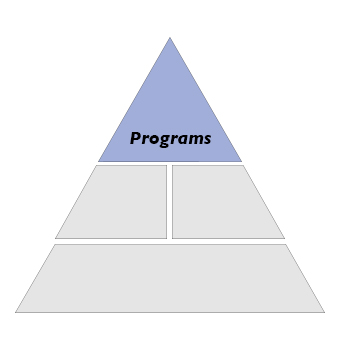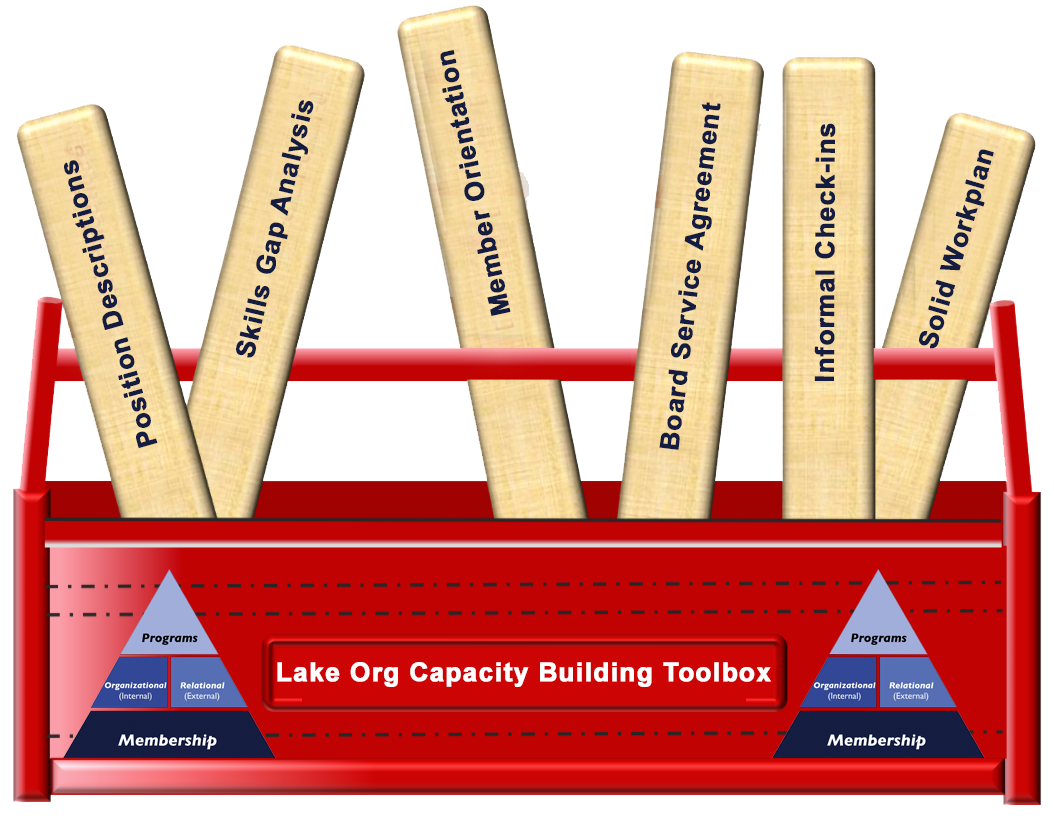 Programmatic Capacity
Programmatic Capacity
Programmatic capacity is demonstrated by achieving results. This is most often seen around lakes through projects and efforts to protect and restore lake health: restoring shoreland plant communities, installing rain gardens, or preventing aquatic invasive species. We have identified five aspects of programmatic capacity that strongly influence a group's ability to get things done. These five overlap in varying degree with membership, organizational, and relational capacity. Programmatic capacity does depend on strengths in those other areas, and it would be hard to imagine an organization that consistently "gets things done" but is weak in those foundational areas.
Our five aspects of programmatic capacity include:
Leadership: The organization has invested in a process to recruit and train leaders on an ongoing basis that are decisive, honest, and knowledgeable and who are capable of listening, decision-making, and solving disputes to ensure that active leadership is available for all necessary tasks.
Completion of Demonstration Projects: The organization has taken a project from an identified need to completion by recruiting necessary technical and financial resources and working together to reach a stated goal.
Growing Expertise: The organization has formally assessed and developed a plan to resolve training gaps that are limiting the organizations ability to communicate effectively about their key issues or to address other organizational deficiencies.
Access to Funding: Support for the organization is diversified and represents that other groups (foundations, agencies, etc.) are supportive of the mission.
Access to Community Power: The organization is effective at coordinating action with other community groups, has the support of local officials or community leaders, and works to actively position the mission as part of broader community priorities.

The five aspects listed above are useful focus areas for an organization to explore, but we are also certain that a group with high programmatic capacity will demonstrate that "the proof of the pudding is in the eating". That is, they will be the groups engaged in numerous activities to restore and protect lake health. Examples include:
- Participating in the
Citizen Lake Monitoring Network (CLMN) and in
Water Action Volunteers to monitor nearby streams
- Participating in Clean Boats, Clean Waters.
- Having numerous
Healthy Lakes and Rivers projects occuring, everything from fish sticks to French drains.
- Holding interesting annual meetings that engage everyone in the watershed.
- Conserving and restoring critical land on the lakeshore and in the watershed.
- Applying for funding for larger scale projects through the Wisconsin DNR's Lake Protection Grants. These grants provide up to $200,000 for land or easement acquisitions, wetland and shoreline habitat restoration, or other projects identified in a DNR-approved lake management plan.
These activities, more than anything else, illustrate what it means to have high programmatic capacity.
-
Identify the barriers and benefits to an activity
-
Develop a strategy that utilizes “tools” that have been shown to be effective
-
Pilot the strategy
-
Evaluate the strategy once it has been implemented
Fall/Winter 2018 -
Programmatic Capacity
Fall/Winter 2019 -
Programmatic Capacity, continued
Fall/Winter 2020 -
Virtual Communication and Engagement
Fall/Winter 2021 -
Carrying Out Programs to Protect Lake Health
Fall/Winter 2022 -
Connecting the Dots: Moving from Education to Action
Fall/Winter 2023 -
Get 'er Done: "Ready-to-go" Programs Help Lake Orgs
Fall/Winter 2024 - Programmatic Excellence: Meet Some Lake Stewarship Award Winners
